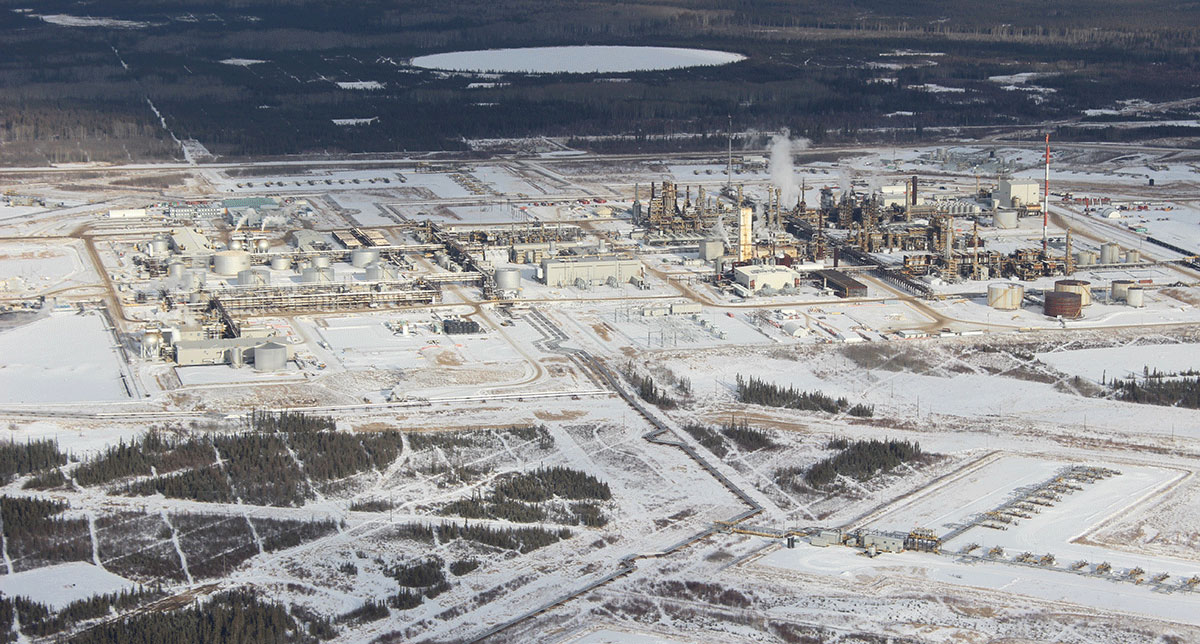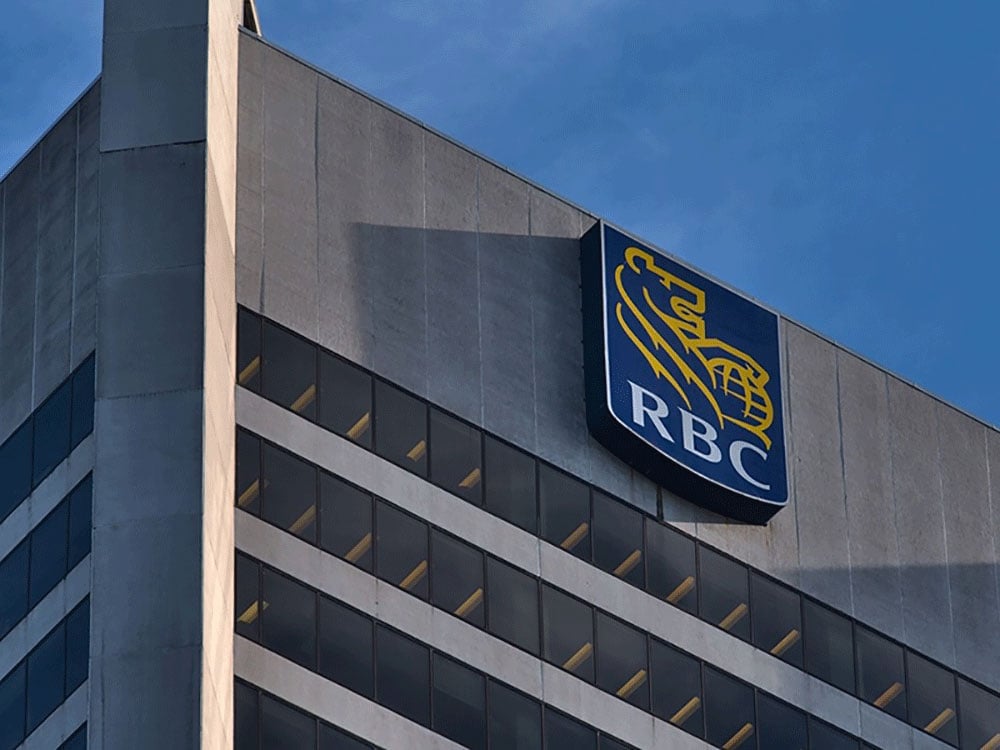In late April, Royal Bank of Canada put out a report claiming that oil and gas production in Canada could rise by 500,000 barrels per day without compromising the country’s climate targets. This would be possible, the financial institution explained, by capturing the emissions from oilsands projects and burying them underground.
The largest and most influential bank in Canada deems this a “new climate bargain,” and under its terms federal and provincial policy-makers must lay off on environmental regulations that limit the oil and gas industry’s growth.
RBC warned politicians to “avoid emissions policy that restricts or cuts near-term production.”
The technology for capturing emissions is highly expensive and not widely in use. Which has some wondering why RBC is so adamant that its version of the future is essential.
A hint may lie in an inconvenient fact omitted in the RBC report and the favourable media coverage it received in national media outlets like the Financial Post and Globe and Mail.
Under a scenario where Canada makes relatively conservative progress towards its Paris Agreement climate goals, the risk of oilsands projects defaulting on their financial obligations skyrockets.
RBC is not only aware of this ticking financial bomb, it’s actually attempted to quantify the potential damage. That’s according to internal projections it helped produce along with the Bank of Canada and federal regulators.
And even while measuring and acknowledging those risks, RBC provided $5.4 billion worth of financing for the oilsands last year alone.
The contradiction that grips RBC — public pressure to signal awareness of the climate threat and internal pressure to finance projects that hasten the crisis — is shared by other banks, who also stand to lose big if their oil investments tank in the shift to a low-emissions economy.
“The transition risk for RBC and the other Canadian banks from climate change is massive,” Matt Price, director of corporate engagement for the advocacy and research organization Investors for Paris Compliance, told The Tyee.
Banking fortunes tied to oil prices
RBC’s need for oilsands production to rise is tied to another must. In order for oilsands projects to remain profitable while producers invest in technology that lowers greenhouse gas emissions, the price of oil needs to stay above US$50 per barrel for the next several decades.
That’s what’s required “to meet investor expectations,” RBC recently calculated in its April report. “While that has largely been the case since 2005, uncertain future demand means that may be a high bar,” the bank acknowledged. Though oil is above $100 per barrel now, it wasn’t too long ago that the pandemic caused it to go below $0 per barrel.
If that $50 per barrel bar isn’t met consistently for the next 20 or 30 years, RBC knows that the financial consequences could be severe. It recently collaborated with five other Canadian financial institutions, along with the Bank of Canada and the Office of the Superintendent of Financial Institutions, to calculate what would happen to the oil and gas industry and other sectors if “starting in 2020, collective global action is taken to reduce emissions toward a target of below 2 C by 2100.”
This was described in a report from last year as a fairly conservative scenario, where “the pace of technological change is moderate.”
If that is what happens in Canada and globally, the probability of conventional oil and gas extraction projects defaulting by 2050 rises by nearly 200 per cent. Oilsands projects, owing to their much higher production costs and carbon emissions, face an even bigger risk. Their probability of defaulting rises more than 400 per cent.
RBC knows that addressing the climate emergency requires massive changes to our fossil fuel-based energy system.
“To have a 50-per-cent chance of meeting a 1.5 C warming target (the stretch goal for the Paris Agreement), the world will need to leave 60 per cent of the world’s remaining oil and gas, and 90 per cent of its coal in the ground,” RBC wrote last month. “There isn’t a moment to lose.”
Yet RBC itself has directed more than $206 billion worth of financing towards fossil fuels since the Paris Agreement was signed in late 2015 — and it is currently the world’s leading banker of oilsands expansion in Alberta.
Those calculations come from the report "Banking on Climate Chaos" that was released in late March by Stand.earth, as well as several other environmental organizations. It found that RBC is globally the fifth biggest banker of oil, coal and gas, beating out massive financial institutions such as Morgan Stanley, Goldman Sachs and Deutsche Bank.
“It’s not like they’re one of these enormous global players that are funding every oil and gas player around the world,” said Alison Kirsch, a research manager with the Rainforest Action Network, which worked on the Climate Chaos report. “They have a very North American focus and still they make it up to the fifth biggest level.”

RBC frequently tries to burnish its climate credentials by pointing out that it has pledged $500 billion towards “sustainable finance” by 2025. But even some of this investing is going towards fossil fuels. A sustainability linked loan it made last year went to Enbridge, builder of the Line 3 pipeline, a cross-border oilsands project that was heavily opposed by Indigenous and environmental organizations in Minnesota, as well as Democratic politicians like U.S. member of Congress Ilhan Omar.
For this reason, campaigners with several environmental groups recently requested that Canada’s Competition Bureau open an investigation into whether RBC is intentionally trying to mislead Canadians by releasing reports and other public materials saying it is committed to meeting the country’s climate goals.
“A credulous and inexperienced person would have the general impression that RBC is taking actions across the entire spectrum of its operations and financial services that are sincere, ambitious, science-based and consistent with internationally agreed standards and actions,” their complaint reads.
Yet the bank is in reality “providing tens of billions of dollars annually in loans, underwriting and investment to support and expand the fossil fuel industry,” it claims.
“RBC strongly disagrees with the allegations in the complaint and believes the complaint to be unfounded,” a spokesperson for the bank wrote in an email to The Tyee. “RBC has been engaging with our clients, partners and other stakeholders, working towards solutions to help Canada meet its net-zero commitments. It’s critically important that we get the transition to net zero right in order to address climate change and we have laid out a clear strategy for meeting climate goals.
Failing to keep oilsands crude pumping and processed while Canada pursues its climate goals could be financially damaging for RBC.
In a report last year for an international organization known as the Task Force on Climate-related Financial Disclosures, RBC noted that it has $106.1 billion worth of credit risk exposure to industries such as oil and gas that could suffer heavily during the transition to a greener economy.
Carbon-related assets represented four per cent of the total credit risk exposure in RBC’s portfolio when it made that disclosure. During the last year, those risks quickly multiplied. They now represent 15 per cent of RBC’s credit risk exposure, according to its most recent disclosure.
“The year-over-year change is driven by overall increased market activity in energy and investor demand given a rebound from lower 2020 levels as a result of the pandemic,” the spokesperson explained.
Early days for untested carbon capture
The only way that RBC’s increasing fossil fuel investments make sense from a climate perspective is if producers of oilsands and other carbon-heavy energy sources aggressively deploy technology to bury their emissions underground. “Carbon capture is the key technology for cutting emissions deeply,” its April report reads.
Yet even RBC admits that a rapid deployment of this technology isn’t very likely.
“It’s pricey, slow to build, adds costs, relies on complex engineering, and sometimes fails to capture or store emissions effectively,” RBC explains in the April report. “The technology also needs to be tested in large-scale settings. As yet, there are no major plants that capture CO2 from the combustion of natural gas, which is the primary application for the oilsands.”
Asked whether relying on this technology is financially or environmentally sound, the spokesperson wrote that “we have nothing further to share on this beyond what’s in the RBC Economics report.”
But there is one clear advantage to be gained from carbon capture and storage — it buys the oil and gas industry time. That was the conclusion of the Bank of Canada report that RBC contributed to, which explained that these types of technologies “may alleviate pressure on some industries that face challenges in abating [emissions].”
To climate experts like Richard Brooks, director of the climate finance program at the advocacy group Stand.earth, RBC’s current climate strategy is merely an excuse to keep fossil fuel profits flowing as long as possible.
“RBC says it wants to achieve net zero by 2050,” he said. “But you scratch slightly below the surface, not very far, and you can see that they have no plan to get there.” ![]()
Read more: Energy, Local Economy, Environment
















Tyee Commenting Guidelines
Comments that violate guidelines risk being deleted, and violations may result in a temporary or permanent user ban. Maintain the spirit of good conversation to stay in the discussion.
*Please note The Tyee is not a forum for spreading misinformation about COVID-19, denying its existence or minimizing its risk to public health.
Do:
Do not: